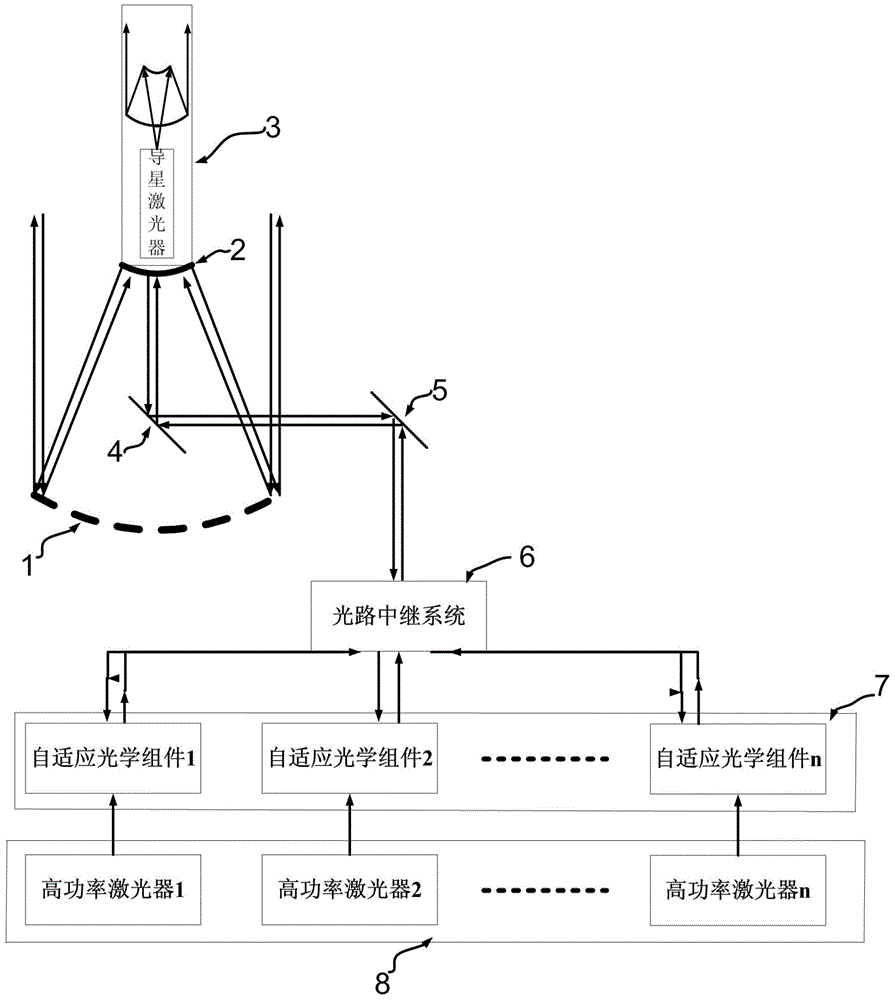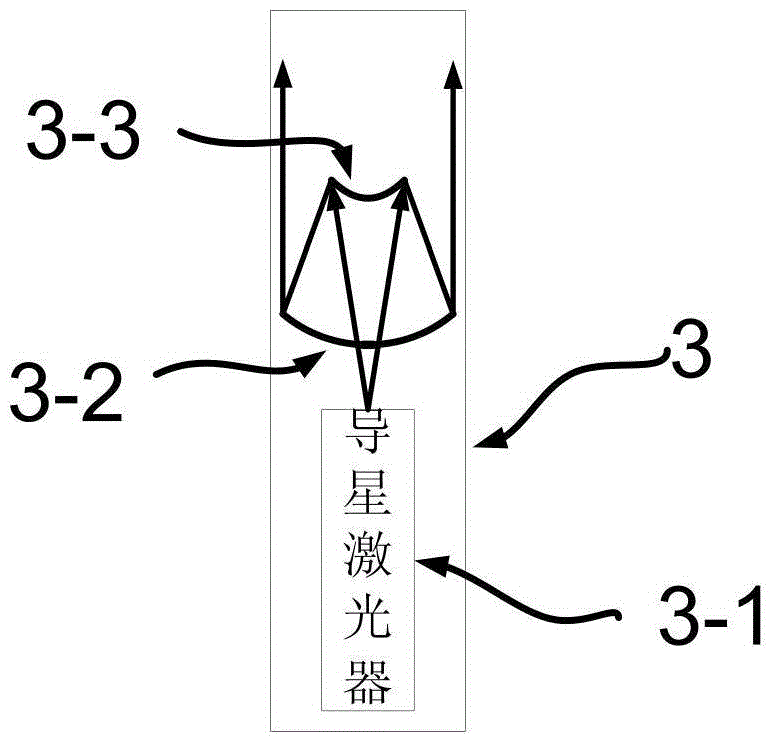Laser beam-combined space debris scavenging system based on self-adaptive optical technology
A technology of adaptive optics and space debris, applied in the space field, can solve the problems of difficult system implementation, thermal deformation of components, high cost, etc., and achieve the requirements of reducing thermal deformation and the influence of the atmosphere on laser transmission, reducing requirements, and reducing power Effect
- Summary
- Abstract
- Description
- Claims
- Application Information
AI Technical Summary
Problems solved by technology
Method used
Image
Examples
specific Embodiment approach 1
[0017] Specific implementation mode 1. Combination Figure 1 to Figure 6 Description of this embodiment, the laser beam combining space debris removal system based on adaptive optics technology mainly consists of a laser emitting telescope, a laser guide unit 3, an optical path relay system 6, n-way adaptive optics components 7 and n multiple-way high-power Composed of 8 laser emitters. Wherein the laser emitting telescope composed of spliced primary mirror 1 and secondary mirror 2 is installed on a set of support and target tracking system as the main optical system. This support and tracking system is an inherent part of most telescopes. The laser guide star unit 3 is installed on the back of the secondary mirror 2, and emits a beam of laser light to an altitude of about 90 kilometers to form a laser guide star. Enter Adaptive Optics Assembly 7. The adaptive optics component 7 measures the current system wave aberration and corrects it. After the laser beams emitted by ...
PUM
 Login to View More
Login to View More Abstract
Description
Claims
Application Information
 Login to View More
Login to View More - R&D
- Intellectual Property
- Life Sciences
- Materials
- Tech Scout
- Unparalleled Data Quality
- Higher Quality Content
- 60% Fewer Hallucinations
Browse by: Latest US Patents, China's latest patents, Technical Efficacy Thesaurus, Application Domain, Technology Topic, Popular Technical Reports.
© 2025 PatSnap. All rights reserved.Legal|Privacy policy|Modern Slavery Act Transparency Statement|Sitemap|About US| Contact US: help@patsnap.com



